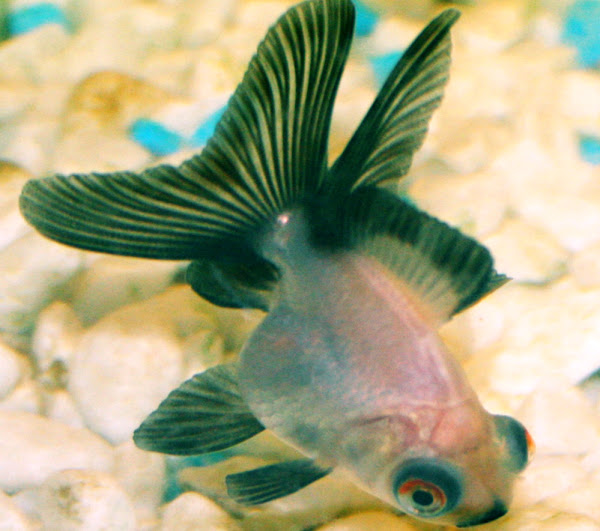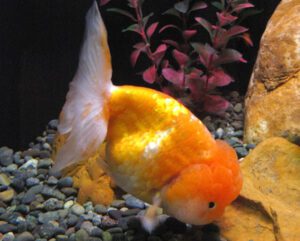The Panda Telescope goldfish is a very beautiful variety of fancy goldfish. It is a panda variant of Telescope goldfish with a characteristics black-and-white color pattern and protruding eyes. It is one of the most heavily hybridized goldfish variety after the Fantail Goldfish. This variety is often called as ‘Panda Moors‘. It is actually a product of hundreds of years of selective breeding. However, read some more information about this goldfish variety below.
Panda Telescope Goldfish Characteristics
The Panda Telescope goldfish are easily identified with a characteristic black-and-white color pattern and protruding eyes. The young ones resemble bronze fantails and their protruding eyes gradually develop with age. And the mature fish sport a velvet appearance. Although they many lose this velvet-like appearance with increasing age. They can even lose their panda coloration with age. And with age they may become orange and white or any other color combination. Frequently they will not keep any of their coloration, or they may turn pure white. [1]

Diet
Like many other goldfish varieties, these fishes are omnivorous. And they will eat almost all types of food.
Uses
These fishes are ornamental fish species. They are raised mainly for ornamental purpose, and also used as pets.
Special Notes
The Panda Telescope goldfish are strictly a cool water fish like all other goldfish varieties. They are reasonably hardy when it comes to temperature range. They can survive in both aquarium and pond environment. They have poor vision, they need to be protected from predators. They can live for long time if proper care is taken. However, review full breed profile of this fish in the table below.
| Name | Panda Telescope |
| Other Names | Also known as Panda Moors |
| Breed Purpose | Ornamental, pet |
| Special Notes | Very beautiful, attractive appearance, reasonably hardy when it comes to temperature range, can survive in both aquarium and pond environment, have poor vision, so they need to be protected from predators, can live longer if proper care is taken, raised mainly for ornamental purpose |
| Size | Small |
| Breeding Method | Artificial and natural |
| Climate Tolerance | Almost all climates |
| Body Color | Black-and-white |
| Rarity | Common |
| Availability | Worldwide |






